Production of X-Rays
1/60
There's no tags or description
Looks like no tags are added yet.
Name | Mastery | Learn | Test | Matching | Spaced |
|---|
No study sessions yet.
61 Terms
X-rays are a type of ___ radiation
electromagnetic
Low frequency electromagnetic waves have a ___ wavelength
long
High frequency electromagnetic waves have a ___ wavelength
short
What is the wavelength range for x-rays?
0.1-0.5 Å
What are the 3 conditions required for x-ray production?
source of electrons (heated filament)
means of accelerating electrons (high voltage)
means of decelerating electrons (target)
Production of x-rays occur when ______ moving electrons are suddenly ______ by interaction with target material
fast, decelerated
Production of x-rays occurs within ___ to ___ mm of target surface
0.25 to 0.5
Energy =
quality
Amount =
quantity
X-ray is directly proportional to the ___ energy of the incident electrons
kinetic
What are the steps for heat production?
electrons interact with outer-shell electrons of the target (anode) atoms
Outer-shell electrons raised to a higher, or excited, energy level (shakes)
energy is insufficient to ionize target atoms
electrons immediatly drop back to normal/relaxed state
transition accompanied by infrared radiation (heat)
What is another word for incident electrons?
projectile electrons
What are the two types of target interactions that produce x-ray photons?
Bremsstrahlung and characteristic
The type of target interaction depends on ________ and ________
kinetic energy of incoming electron and binding energy of electron shells
electrons give up energy to target atoms
In a Bremsstrahlung interaction, the high speed incident electron __________
passes near the nucleus (has enough energy to pass through the orbital shells)
“Brems” also means ______ or ______ in German
“braking” or “slowing”
Brems interactions make up ____% to _____ % of the primary beam
80% to 90%
In a Bremsstrahlung interaction, the ___ deflects the electron from its original path of travel
positive charge of the nucleus
What is electrostatic force?
power of force field
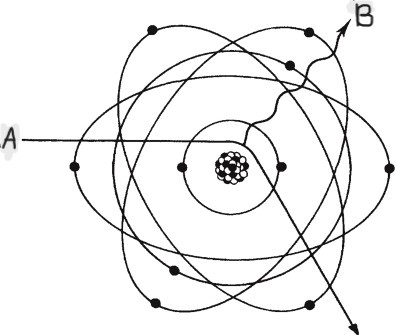
What type of interaction is this?
What is A in this image?
What is B in this image?
Bremsstrahlung interaction
A: incident electron
B: Bremsstrahlung x-ray photon
Loss of kinetic energy given off as an x-ray photon is ___
Brems radiation
Energy of Brems radiation depends on what 3 things?
the energy of the incident electron
the charge of the nucleus
the proximity of the incident electron to the nucleus
In a Bremsstrahlung interaction, interactions that take place closer to the nucleus have a ___ energy Brems
higher
In a Bremsstrahlung interaction, interactions that take place farther from the nucleus have a ___ energy Brems
lower
In a Bremsstrahlung interaction, the incident electron may lose ___ of its kinetic energy in an interaction with the nucleus
any amount
The average beam energy is ____ to ___ % of kVp selected in Brems Radiation
30% to 40%
When 70 kVp is set on the control panel, explain the Brems radiation
kinetic energies up to 70 keV are produced
electrons may lose all, some or none of their kinetic energy
Brems x-rays produced may have energies up to 70 keV
Brems radiation energies are ________
Very low energy photons are absorbed ___
Unpredictable
within the tube
What is heterogenous/polyenergetic beam?
contains a variety of energies
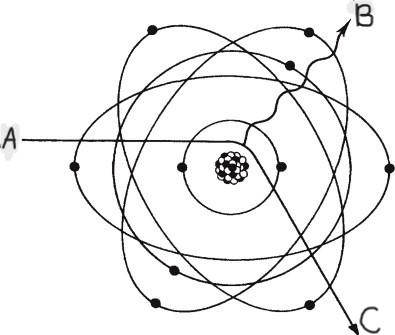
In this image, if A is 60 kV and B is 10 kV, what is the kV of C?
50 kV
(60 - 10 = 50)
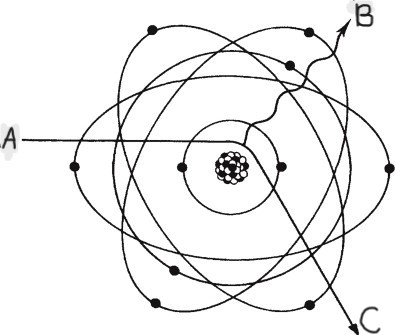
In this image, if B is 25 kV and C is 15 kV, what is the kV of A?
40 kV
(25 + 15 = 40)
Characteristic reactions make up ___% of the primary beam
10-20%
Characteristic x-rays are emitted when ___
an outer shell electron fills an inner shell void
In characteristic interactions, the incoming electron ___
ejects inner shell (K shell) electron
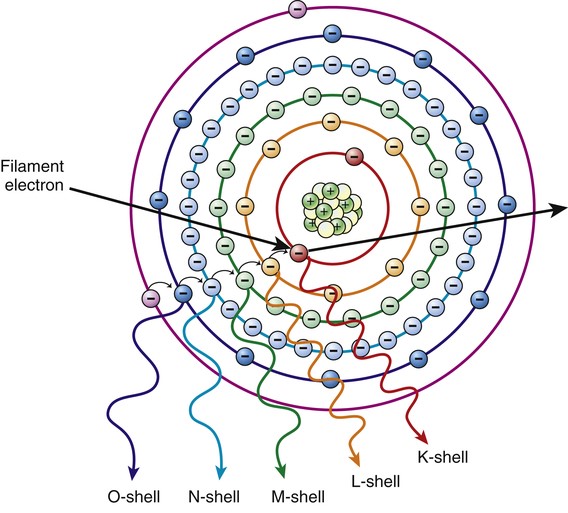
What type of interaction is shown in the image?
characteristic interaction
What is the cascade effect?
In characteristic interactions, each electron shell releases less and less energy as electrons fill in the gaps
Why is the type of radiation interaction predictable?
we know the binding energies of the shells of the target atom (tungsten)
What is the atomic number of Tungsten?
How many protons does it have?
How many neutrons does it have?
How many electrons does it have?
atomic #: 74
P: 74
N: 110
E: 74
How many electrons are in the K shell of Tungsten?
2
What is the approximate binding energy for the K shell of Tungsten?
69.5 keV
X-ray energy equals the difference in ___ of the orbital electrons involved
binding energy
Electrons dropping into the K shell may be from ___
any shell (not always the subsequent one)
The further out the electron comes to “drop” into a vacancy, the ___ the characteristic radiation produced
greater
Only ___ shell characteristic interactions contribute to the useful beam
K
Characteristic radiation interaction will only occur at ___
69.5 keV and above
(if <70 kVp is selected, there will only be Brems interactions)
Define energy (in terms of characteristic radiation interactions)
the difference in binding energy of the shells involved
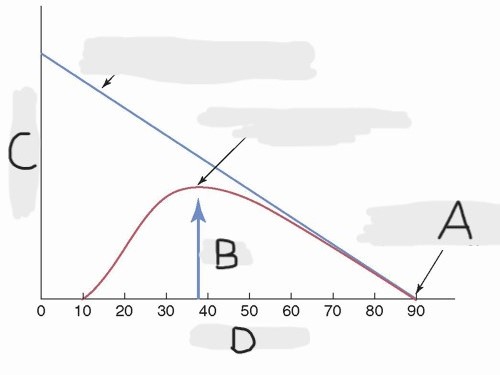
What are C and D on this graph (the axes)?
C: # of photons
D: energy (keV)
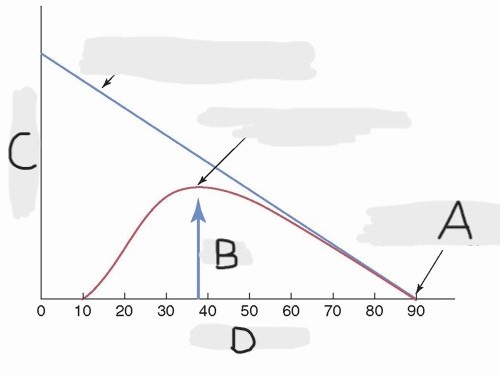
What is A on this graph?
What is B on this graph?
A: maximum energy
B: average energy
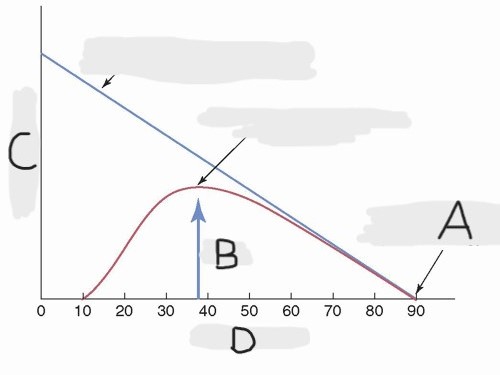
What type of interaction does this graph depict?
Brems
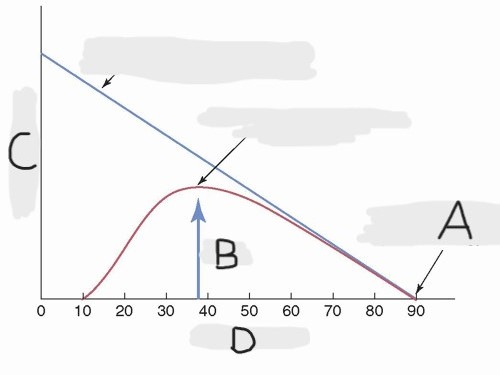
What point on this graph is determined by the kVp you set?
A
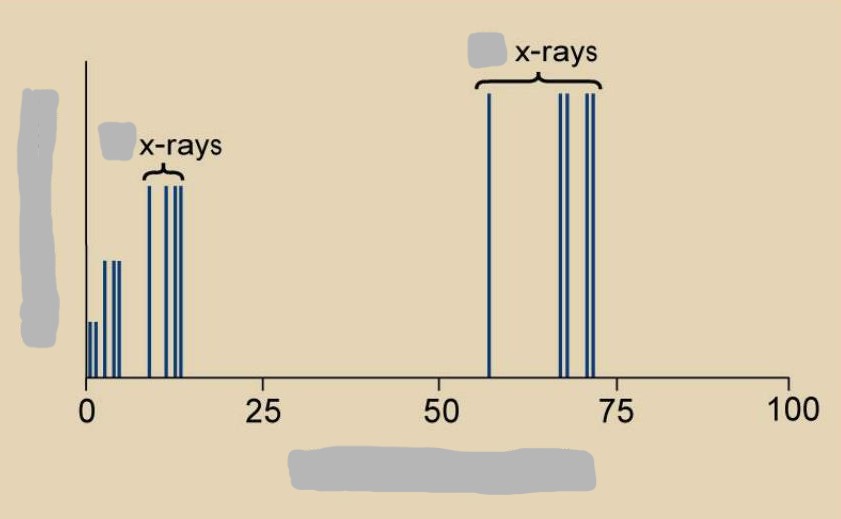
What type of interaction does this graph depict?
characteristic
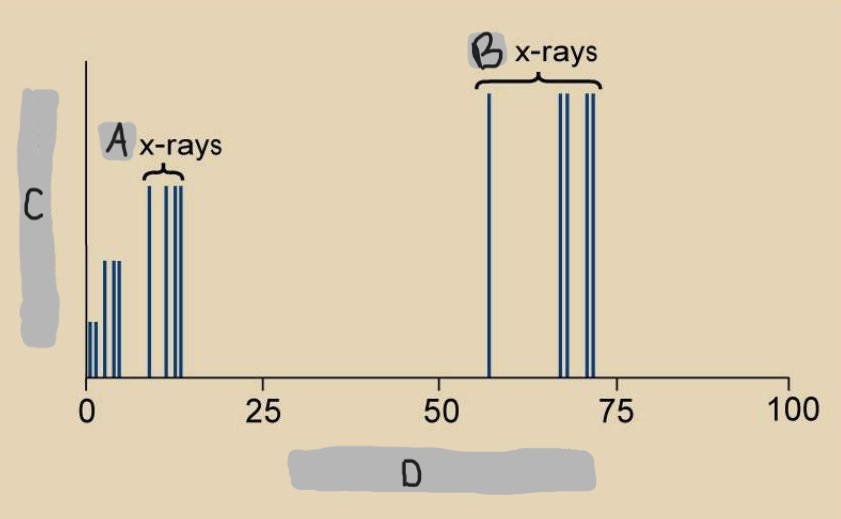
What shell is represented by letter A?
What shell is represented by letter B?
A: L shell x-rays
B: K shell x-rays
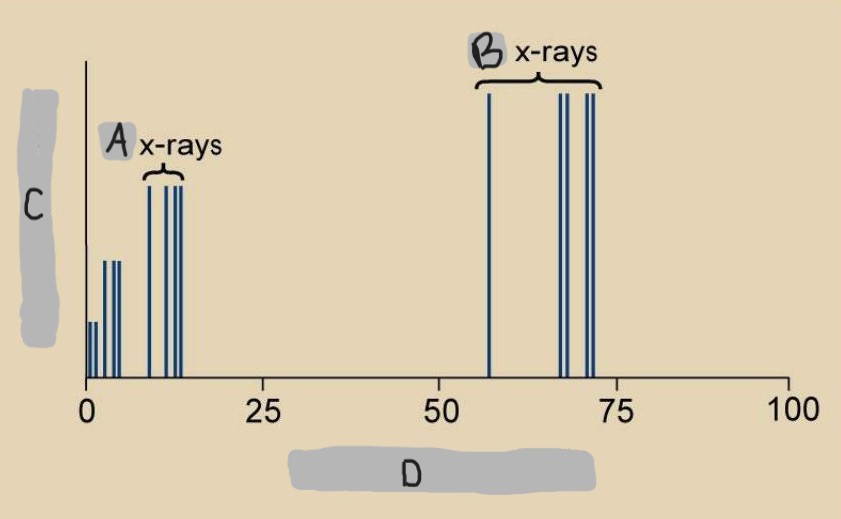
What are the C and D on this graph (the axes)?
C: # of photons
D: energy (keV)
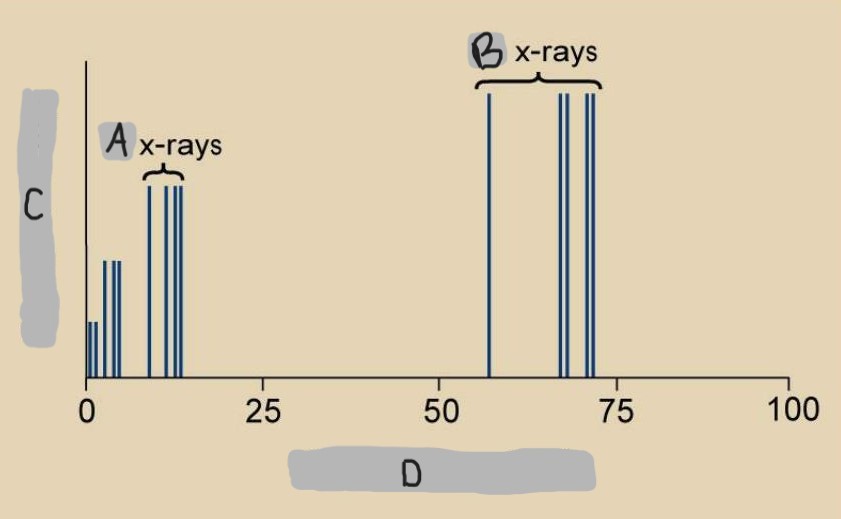
What are the vertical lines on this graph called?
characteristic peaks
Characteristic x-rays are only emitted at ___
70 kVp and above
Bremsstrahlung x-rays are emitted over ___
entire spectrum of beam
Average beam energy is ___% of set kVp
30-40%
___ determines the # of electrons that boil off during thermionic emission and # of x-ray photons in beam
mAs
___ determines the penetrability of beam
kVp
When the curve of the graph shifts to the right, this means that the energy ___
has increased
Increased generator efficiency leads to a(n) ___ average photon energy and a(n) ___ number of photons in beam
increased; increased